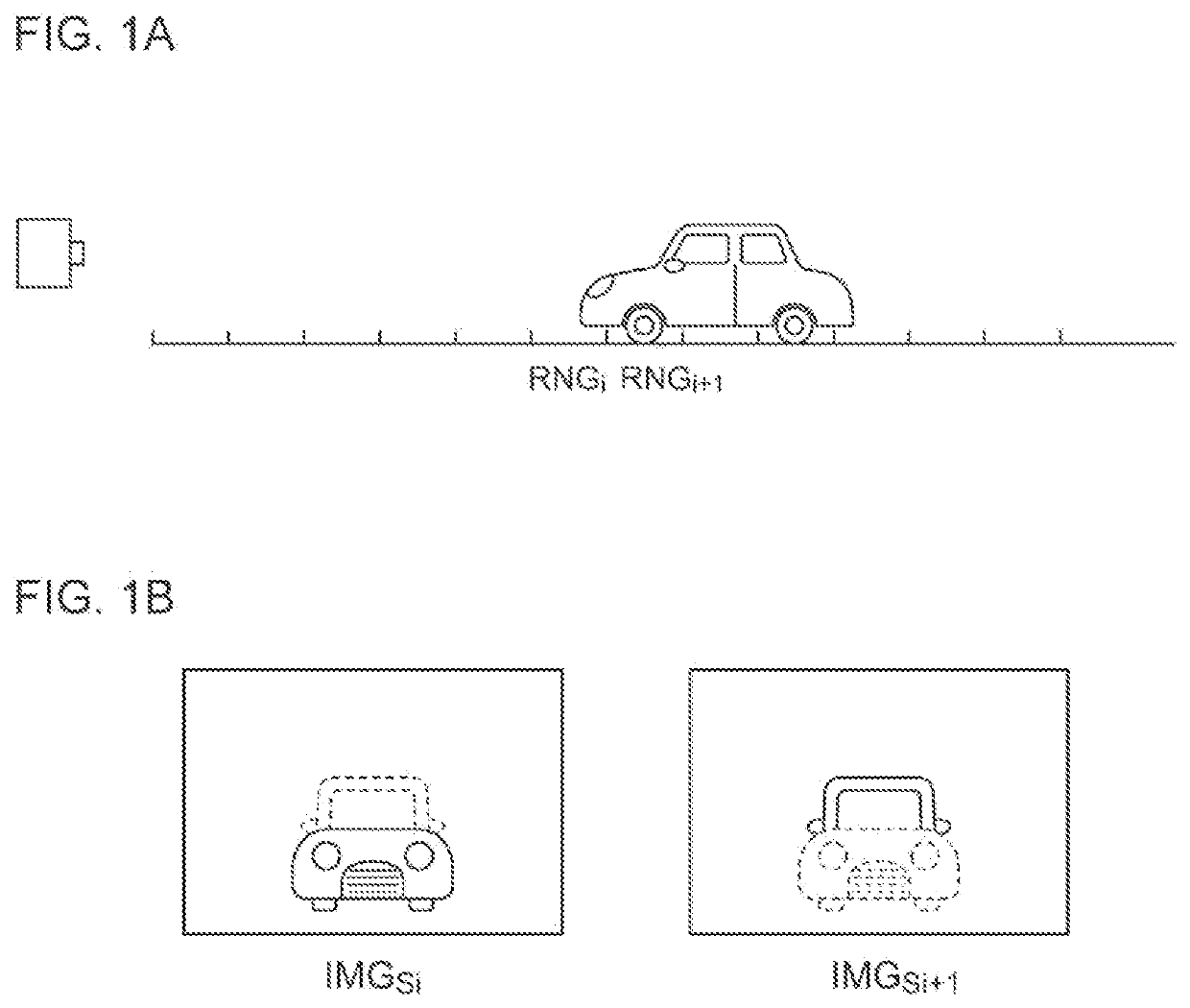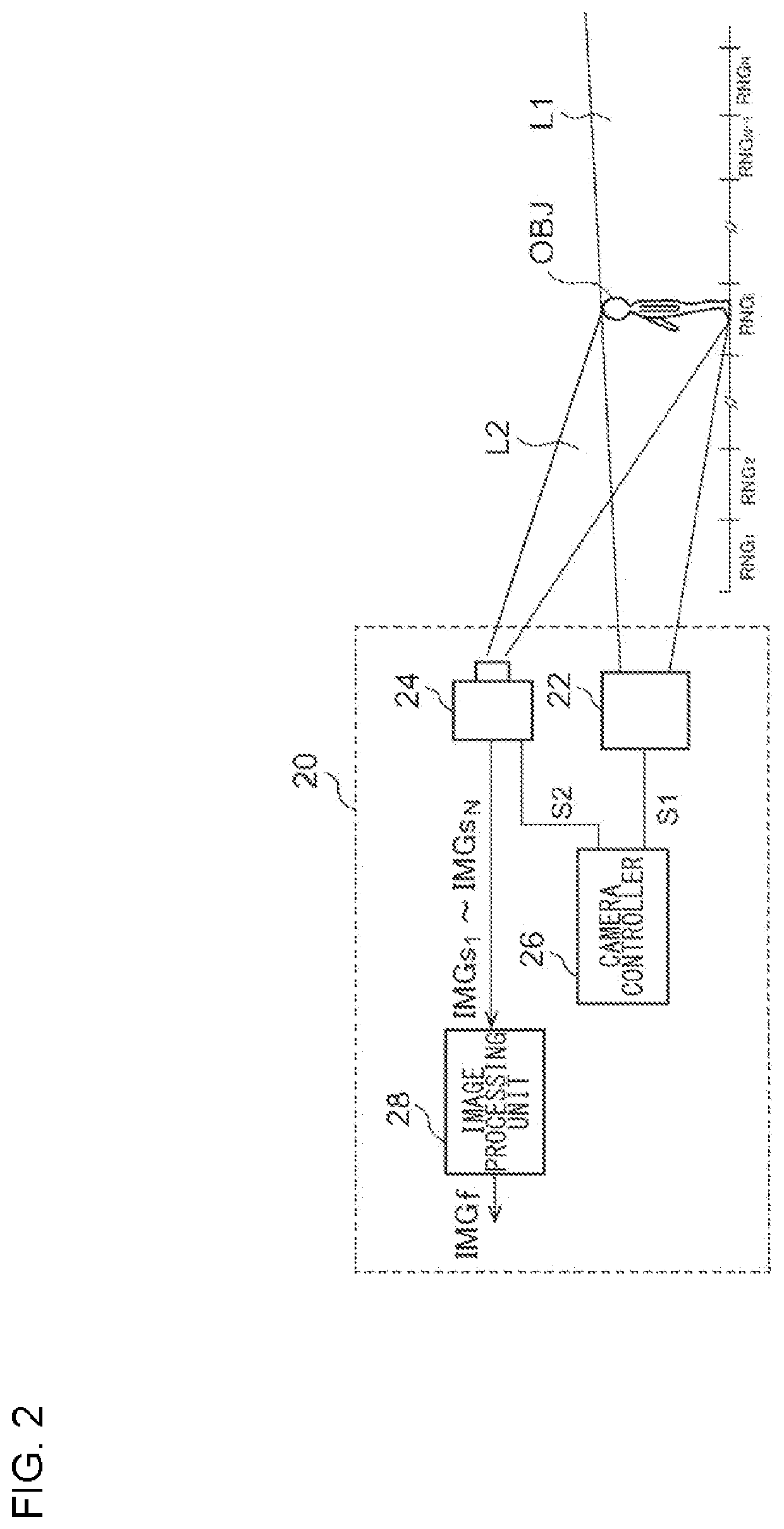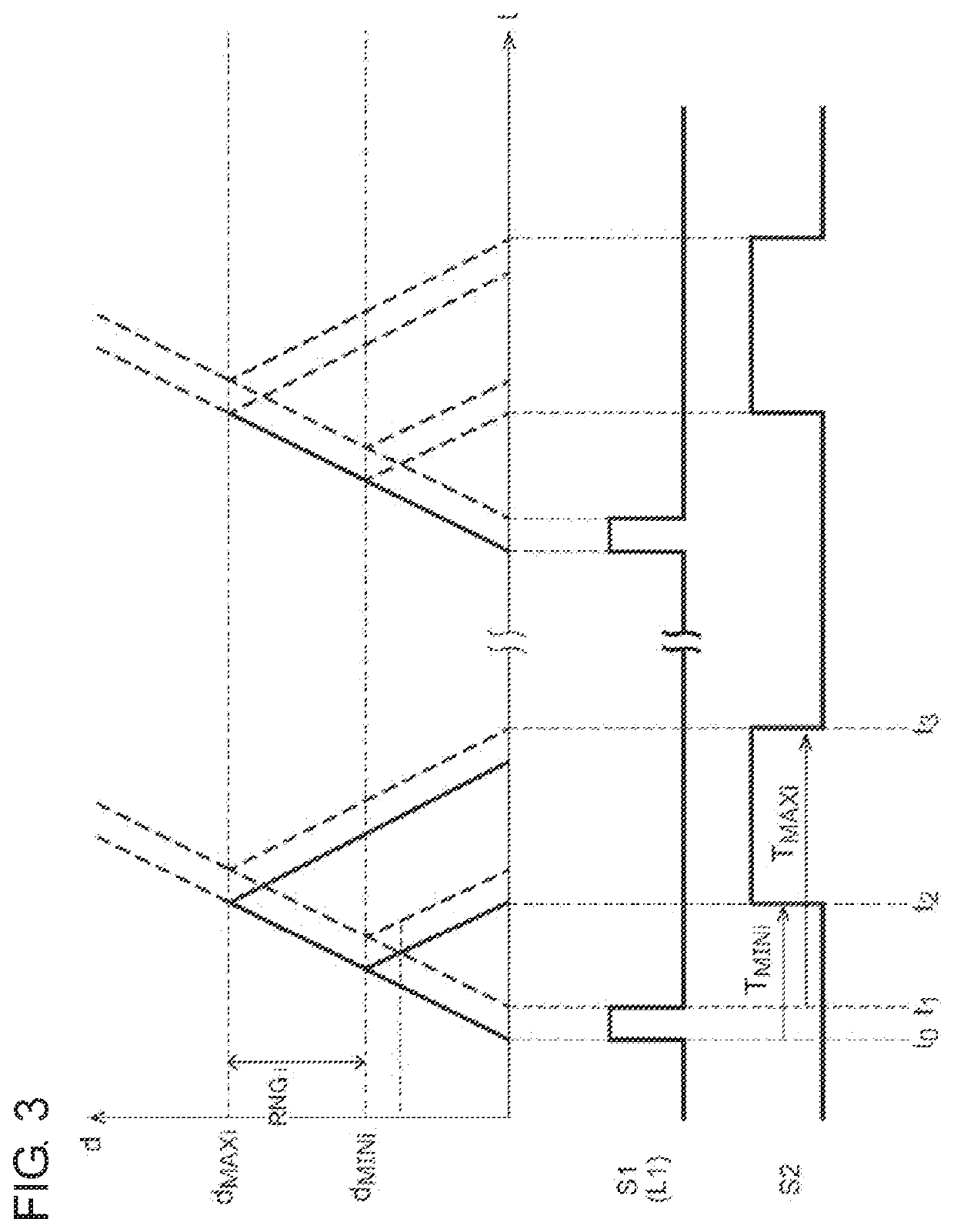Gating camera
a gating camera and camera body technology, applied in the field of gating cameras, can solve the problems of difficult to recognize objects, difficult to separate individual objects, and typical monocular cameras are not capable of acquiring depth information, so as to reduce the effect of active sensors and shorten the image capture time of gating cameras
- Summary
- Abstract
- Description
- Claims
- Application Information
AI Technical Summary
Benefits of technology
Problems solved by technology
Method used
Image
Examples
embodiment 1
[0065]FIG. 2 is a block diagram showing a gating camera 20 according to an embodiment 1. The gating camera 20 captures images for a plurality of N (N≥2) ranges RNG1 through RNGN divided in the depth direction. For example, the depth of a single image capture range is designed on the order of 1 to 2 m (e.g., 1.5 m). Description will be made assuming that N=100.
[0066]The gating camera 20 includes an illumination apparatus 22, an image sensor 24, a camera controller 26, and an image processing unit 28.
[0067]The illumination apparatus 22 illuminates probe light L1 in front of the vehicle in synchronization with a light emission timing signal S1 supplied from the camera controller 26. The probe light L1 is preferably generated as infrared light. However, the present invention is not restricted to such an arrangement. Also, the probe light L1 may be visible light having a predetermined wavelength.
[0068]The image sensor 24 is configured to support exposure control in synchronization with a...
embodiment 2
[0095]FIG. 10 is a block diagram showing a gating camera 20 according to an embodiment 2. The gating camera 20 captures images for a plurality of N (N≥2) ranges RNG1 through RNGN divided in the depth direction. For example, the depth d of a single image capture range is designed on the order of 1 to 2 m (e.g., 1.5 m). Description will be made assuming that N=100.
[0096]The gating camera 20 includes an illumination apparatus 22, an image sensor 24, a camera controller 32, and an image processing unit 34.
[0097]The illumination apparatus 22 illuminates probe light L1 in front of the vehicle in synchronization with a light emission timing signal S1 supplied from the camera controller 32. The probe light L1 is preferably generated as infrared light. However, the present invention is not restricted to such an arrangement. Also, the probe light L1 may be visible light having a predetermined wavelength.
[0098]The image sensor 24 is configured to support exposure control in synchronization wit...
embodiment 3
[0135]FIG. 16 is a block diagram showing a gating camera 20A according to an embodiment 3. In the gating camera 20A, the illumination apparatus 22 is configured to focus or diffuse the probe light L1 so as to provide a variable illumination range. The camera controller 32 is configured to be capable of adaptively controlling the illumination range of the illumination apparatus 22 according to a control signal S4.
[0136]When the slice images IMGs to be cropped and transmitted are captured, the camera controller 32 instructs the illumination apparatus 22 to focus the probe light L1 so as to narrow the illumination range.
[0137]For example, when the far-distance slice image group through IMGsN is to be captured in the second mode, the camera controller 32 focuses the probe light L1 so as to illuminate the probe light L1 in a concentrated manner to the region of interest. This allows the illuminance of the illumination range to be raised, thereby allowing a clear image to be acquired.
[013...
PUM
 Login to View More
Login to View More Abstract
Description
Claims
Application Information
 Login to View More
Login to View More - R&D
- Intellectual Property
- Life Sciences
- Materials
- Tech Scout
- Unparalleled Data Quality
- Higher Quality Content
- 60% Fewer Hallucinations
Browse by: Latest US Patents, China's latest patents, Technical Efficacy Thesaurus, Application Domain, Technology Topic, Popular Technical Reports.
© 2025 PatSnap. All rights reserved.Legal|Privacy policy|Modern Slavery Act Transparency Statement|Sitemap|About US| Contact US: help@patsnap.com



